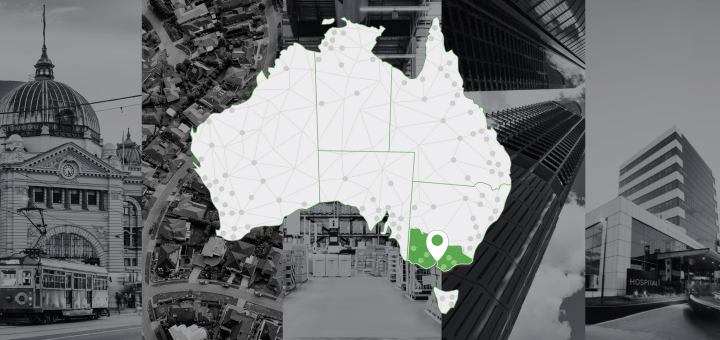Two years is a long time in economic development at the local government level. .id economist, Keenan Jackson, has prepared this analysis with interactive charts for every local government area in Australia, showing you how your local economy has changed in recent years and what factors are having the biggest impact.
A lot can change in two years.
I should know – in the space of two years from 2016, I got married and had my first child.
Economies are the same. For example, in 2013/2014, the Western Australian economy experienced 5.8% economic growth, two years later it was only 1.1%.
A year later the economy actually contracted.
This illustrates why it is crucially important to monitor economic growth of a region on a regular basis. So, I thought it would be a good exercise to see how different economies have experienced the two years since 2016 (coinciding with the last Census).
Find your story with the interactive charts below
If we have learned anything from our work helping local councils (including Wollongong, Campbelltown, Monash, Toowoomba, Maribyrnong and Canterbury-Bankstown) build informed economic development strategies, it is that different locations require very specific responses that take into account their unique characteristics and growth trends.
This blog contains a number of interactive maps and charts to help you explore where your LGA sits and what has influenced economic change in recent years. Choose your local government area (LGA) from the menu to see the story for your area.
If you would like help understanding this story in your area, book a time to speak with our consulting team here.
The state story
On a state level, Victoria and ACT were by far the leading economies, both averaging 3.8% p.a. growth during this period.
However, when looking at per capita growth, Victoria comes right back to the pack averaging only 1.4% p.a.
Per capita growth is highly important from a welfare perspective, but it also can influence whether your growth is sustainable in the long run.
High population growth, as Victoria has experienced, places a challenge on all levels of government going forward. In the short term, Governments can gain an economic windfall from a rise in the tax base. However, if this money is not invested wisely, substantial problems can eventuate as public infrastructure (transport, health, education) fails to catch up with demand.
What about from an LGA level?
Using economy.id and National Economics (NIEIR) annual economic estimates, we can also explore how regions at a sub-state level have changed during this period.
Local Government Areas can experience much more rapid changes than States, with large scale projects and the entry/exit of businesses impacting economies substantially.
This is particularly true for regional areas, especially mining regions. In fact, the five LGAs experiencing the largest economic growth between 2016 and 2018 were regional areas, and so were the top five experiencing declines.
The map below allows you to explore where your LGA fits on a scale of other LGAs in a benchmark region in terms of change in Gross Regional Product, Jobs, and Employed Residents.
It presents an interesting picture. In regional Australia, some mining areas in QLD experienced growth above 20% p.a. (albeit from lower bases). In numbers terms, regional cities led the way, with Greater Geelong growing by $1.1B in the two years.
In our big cities, the outer growth areas are experiencing massive change. Cardinia’s economy (Vic) averaged 6% growth between 2016 and 2018 and Camden (NSW) averaged an incredible 9.8%! However, some inner areas are also growing fast off the back of major developments e.g. Victoria Park (WA) grew by 7.3% p.a.
For some locations, the story is quite complex. For example, Greater Bendigo’s employment was estimated to have increased by more than 3,000 jobs but its GRP only by $109m. This is due to the opening of the new $630 million Bendigo Hospital (increase in jobs in Health Care and associated areas) and a fall in gold prices during the period (fall in value added in Mining).
What has influenced economic change in your LGA?
To understand the high-level influences of economic change in your LGA, we have prepared a chart that explores changes in local Population, Participation, and Productivity, or the three P’s of economic growth.
Understanding that many LGAs are not self-contained, we have also added employment capacity, that identifies changes in local jobs vs employed residents. For example, if your LGA is creating jobs faster than residents are gaining employment, it is likely some people are coming into your LGA from outside for work opportunities, and vice versa.
In the case of Camden, it is clear that most of their economic growth is population led (8.9% p.a.). In contrast, Greater Geelong’s growth was split between population, participation (influenced by working age profile), and employment capacity (more jobs than employed residents).
Explore your economic story in more detail
If you would like to explore the drivers of your local economy in more detail, including local areas of strategic importance and specialisation, book a time to speak with our economic consulting team. Otherwise, subscribe to our blog to stay up to date with other pieces of analysis like this from our economic consulting team.









